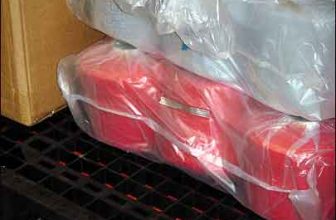
American Apparel uses RFID tags for single product labeling and clothing tracking
[ad_1]
American Apparel has always been known for breaking the conventions of the clothing retail industry. In the United States, a country where 96% of its clothing is imported, American Apparel does the opposite. The company has sewing, design and dyeing factories in Los Angeles, and all products are produced in Benshi. In addition, although the product does not have the company logo printed, and no celebrities are invited to promote it, young people, hippies and urbanites all recognize the brand very much. American Apparel has 180 stores in 13 countries. Now the company has decided to use RFID tags for item-level labeling and product tracking, and is confident in the company’s RFID applications.
American Apparel representatives first contacted RFID manufacturer Vue Technology at the RFID Journal Apparel and Footwear Summit in New York last August. At that time, the company had had discussions with RFID hardware providers Motorola and Avery Dennison Retail Information Services.
After that, American Apparel started a pilot project with Vue, Motorola and Avery Dennison in a store at Columbia University in New York in October last year. American Apparel uses Vue’s TrueVue software platform to manage electronic product codes and inventory data, uses Motorola® readers to collect data, and Avery Dennison® tags to achieve product tracking. Vue is the main integrator for this pilot project, said Gordon Adam, Vue’s senior vice director of sales.
American Apparel uses RFID tags to implement single product labeling and clothing tracking. It plans to implement the RFID system in 17 New York stores within 3 months. The main goal of American Apparel’s RFID system is to improve the accuracy of inventory and better store clothes on the sales floor. After adopting this system, the company quickly saw the benefits: zero shortages in the sales floor and faster inventory of all clothing in the store. In the past, 4 workers took 8 hours to complete the inventory of the store, but now it only takes 2 workers to complete it in 2 hours, so that employees have more time to help customers shop and complete other tasks.
Based on the good results of the pilot project, American Apparel believes that RFID technology will also have a positive effect on other aspects of its business process, and has decided to formally adopt the RFID system in the pilot store and 16 other stores in New York. The company plans to complete the installation of the New York store within 3 months, and then install the system in 128 other North American branches.
American Apparel’s products are very simple, T-shirts, sweatshirts, underwear, etc., and they are all basic models, but the colors are extremely rich. American Apparel’s approach to clothing inventory is different from other clothing retail stores. Adams explained that there are many sizes and colors of each piece of American Apparel; only one piece of clothing of a certain color and size will be displayed on the sales floor, but make sure that all types of clothing are in Exhibited on the sales floor. This means that once you buy a piece of clothing, you won’t find exactly the same clothes on the sales floor. In order to replenish goods in time, employees must regularly obtain sales lists from the cash register and take out the missing clothes from the warehouse.
In the pilot store, a reader installed at the cash register reads the RFID tag of each piece of clothing sold and transmits the data to the Vue software, which triggers an alarm on a computer screen in the inventory room. The staff then took out the clothes that were sold. When the clothing is brought to the place of sale, the reader antenna installed between the stock room and the sales floor reads the tag, sends the information to the software, and the software then updates the location of the goods.
During the pilot project, employees in the Columbia University store have adopted a batch of Avery Dennison’s AD-220 EPC Gen 2 passive tags and pasted them on clothing shipped from the Los Angeles manufacturing center. But as the company decides to formally adopt this system, the company plans to complete the labeling work at the manufacturing site.
When the goods leave the distribution center, the Motorola XR440 fixed reader installed on the warehouse door will read the hand-pasted EPC Gen 2 shipping label on the outside of each box and match it with the EPC code of all clothing labels in the box . All these data-the EPC code of the container and the clothing, the reading event (including the time and the position of the reader)-will be sent to the TrueVue software platform.
When the retail store receives the labelled box, another Motorola? XR440 fixed reader will collect the EPC data and send the data to the store’s Vue software. The software corresponds to the received goods and the factory delivery order in advance. Then, the Vue software added the goods to the store inventory, and the employees used Motorola? MC9090-G RFID handhelds to regularly check all the goods in the sales venue.
The signs posted on the store let customers understand the application of RFID tags and the purpose of inventory tracking. Currently, tags are recycled and reused at the cashier. However, once retailers start to install this system in other stores, RFID tags will still remain on the clothes.
So far, Adams said, American Apparel has placed an order to Avery Dennison for 1 million RFID tags, which will be used in 17 stores in New York. “These labels are estimated to only last for 6 months,” he said. “The company is expanding the number of branches every year, which means that the number of label orders in the future is very substantial.”
[ad_2]




